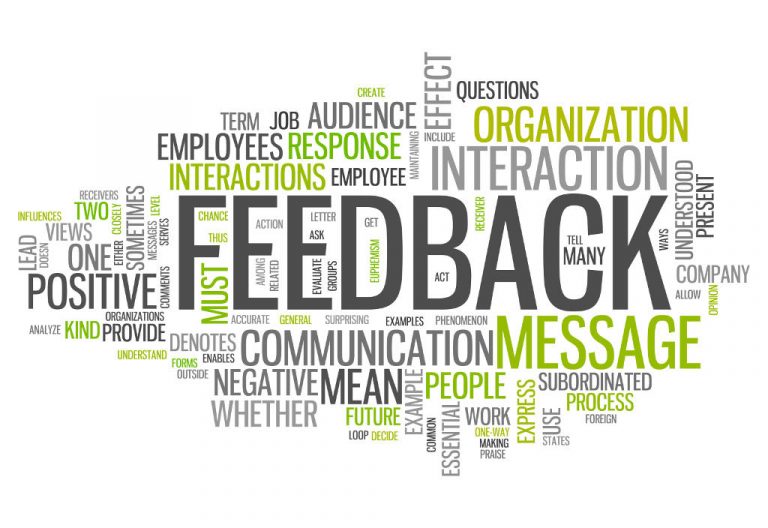Clients often ask me about how to deliver effective feedback to their people. Many of the leaders that I’ve worked with were never given any formal training on how to deliver a meaningful and impactful feedback conversation. Some will focus exclusively on the positives, and hold back from sharing the difficult and hard hitting points. They will sugar coat things due to fear of conflict or rejection. Other leaders are more direct and hard-hitting. They jump right to the problems at hand creating a difficult environment for someone to understand how they need to change their behavior.
At Bandelli & Associates, we partner with our clients to maximize the impact they have on others. One of the areas in which we do this is through cultivating the skills needed to deliver effective feedback. Our clients get firsthand exposure to this through our executive assessment and feedback process. They learn how to take feedback and process it, and they also learn how to provide feedback to their direct reports and teams. Conducting the proper feedback discussion can pave the way for developing trust and building relationships that lead to better outcomes and higher job performance. Below we outline the seven keys to delivering effective feedback:
- Prepare for the Feedback Session: As simple as it may sound most leaders do not prepare for a feedback discussion. They wait until issues get out of hand before delivering negative feedback, or until the annual performance appraisal meeting to share strengths and developmental opportunities. This is a big mistake. Feedback should be an on-going process that takes place at least on a monthly basis. Leaders should set aside time to meet with their direct reports and have it in a consistent business rhythm. This is especially important for newly formed teams or when new leaders join the organization. In preparing for the feedback session, it is important to review notes from the previous meeting and/or take time to review the key points that you want to share in the meeting. Going into a feedback discussion without proper preparation can turn into a disaster.
- Take Time to Establish Rapport: Many leaders like to dive right into the feedback. They do not take time to set the stage, discuss the business, or how the feedback ties into goals, objectives, or direction for the future. Taking time to establish rapport at the start of a feedback discussion is critical to setting the tone for the conversation. It puts both parties at ease and allows for a more productive dialogue. I will often take 10-15 minutes at the beginning of any of my feedback meetings to focus on the relationship, and how our partnership will make my clients more effective leaders.
- Start with Strengths and Positive Attributes: Research shows that in most feedback discussions people will tend to retain one or two key points from the meeting. They will typically focus on what is broken or what they need to work on. That is why it is important to start with a leader’s strengths and attributes. What are they doing well? What positive things have you or others seen in their job performance? In their ability to connect with and partner with colleagues? In hitting goals or business objectives? Highlight these areas so the person understands how their contributions to the team and organization are having an impact. I typically like to identify 3-4 strengths to share with my clients. They need to know what they do well, and how they can continue to leverage their talents and capabilities to drive performance.
- Be Honest and Direct about Development Opportunities: The other side of the coin in feedback discussions is sharing weaknesses, development opportunities, or gaps in performance. Many leaders are either too lenient or too critical when it comes to delivering difficult feedback. They miss out on opportunities to take a learning moment and create a dialogue around how changes in behavior can lead to productive outcomes. When delivering constructive feedback, it is important to speak in specific terms and not use generalizations. Saying that a direct report “has difficulty building relationships” is too vague. Saying that a direct report “needs to solicit more feedback from colleagues before making a decision” is specific and actionable. Again, saying someone “needs to be more strategic” misses the mark. Saying that they “need to think with an enterprise mindset when making decisions that can impact multiple areas of the business” outlines what strategic means, and how it relates to broader organizational objectives.
- Give Time for Processing and Discussion: It is easier to share feedback and leave someone on their own to figure out next steps than it is to work together to process and discuss possible changes in behavior. The best leaders share feedback, and then work with their people to outline ways to address the feedback and make changes. I like to take clients through each strength and opportunity one-by-one and discuss it in the broader context of the team or organization. This usually leads to a deeper discussion that encompasses how all their skills and attributes are related to the larger mission, goals, and business objectives. Make sure to offer advice and counsel as they process the feedback. Come up with suggestions or ideas about how they can start to build a strong development plan.
- Build a Development Plan: Once you have taken time for processing the feedback, it is important to partner with your people to build a development plan. I usually outline 2-3 objectives or desired outcomes that they want to take action on, and then we list specific leadership behaviors, business experiences, and relationships that will help them get there. This allows clients to leverage the full range of options (e.g., people, experiences, behaviors) at their disposal to make the required changes. Remember, action plans should be simple and succinct. Making them too complicated can cause people to get frustrated and avoid working on any of their desired outcomes.
- Take Immediate Action: Encourage your people to never leave the site of a goal or desired outcome without taking immediate action towards its attainment. The action does not need to be drastic or dramatic, but it has to be something that gets them to begin moving in the direction of their key objectives. For example, if they want to develop their business acumen, they could go on-line and look for a book or course at the local college or university that will help them develop the skill. If they want to improve their public speaking, they could look for a Toastmasters group or take a course from SpeakEasy to improve their verbal communication skills. Action leads to behavioral change and behavioral change leads to progress. Make sure they take immediate action to get things moving in the right direction.
Follow these 7 steps and you will be well on your way to delivering effective feedback. It will also help you build stronger, more impactful relationships with your people.
For more information on Delivering Feedback, contact Bandelli & Associates at abandelli@bandelliandassociates.com
Visit our new website: www.bandelliandassociates.com
Leadership Matters. Without It, People Fail.


